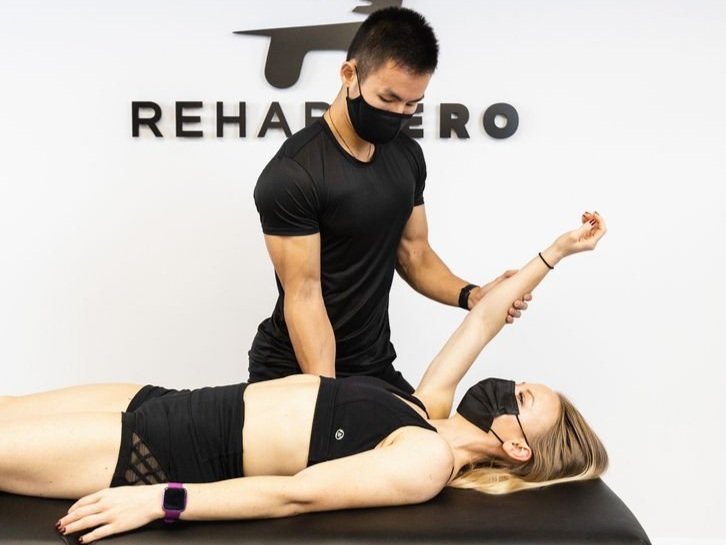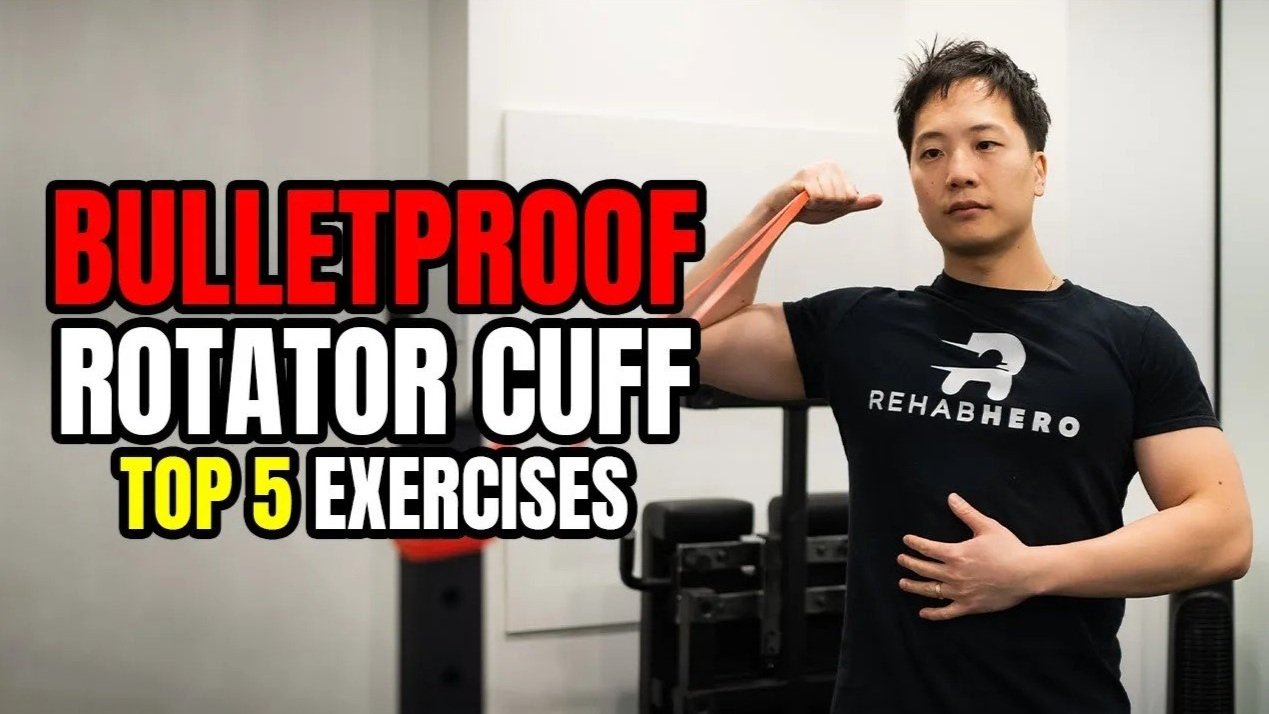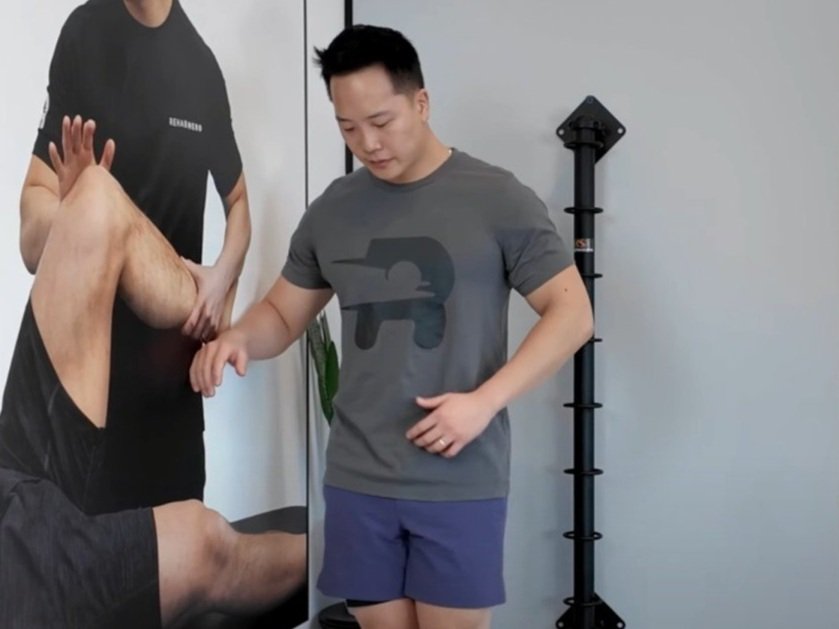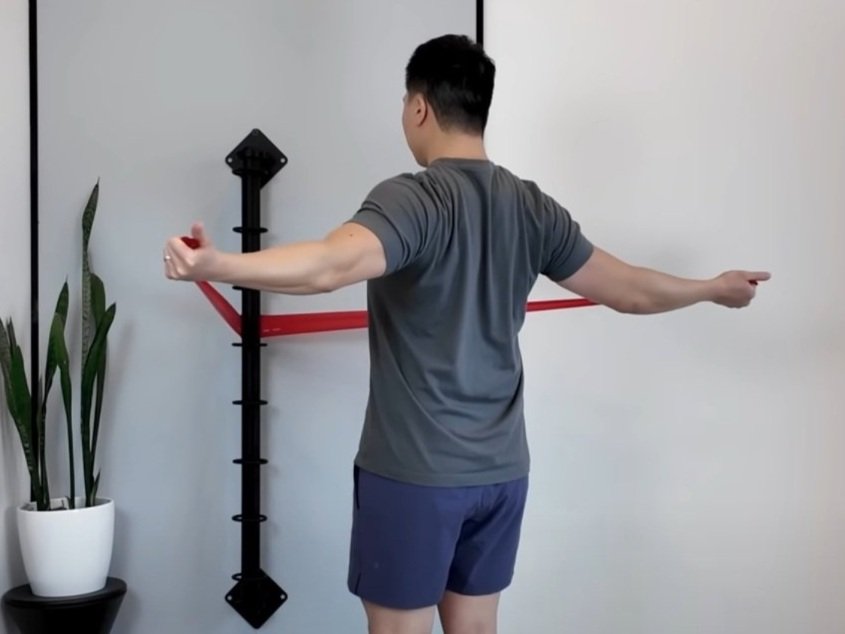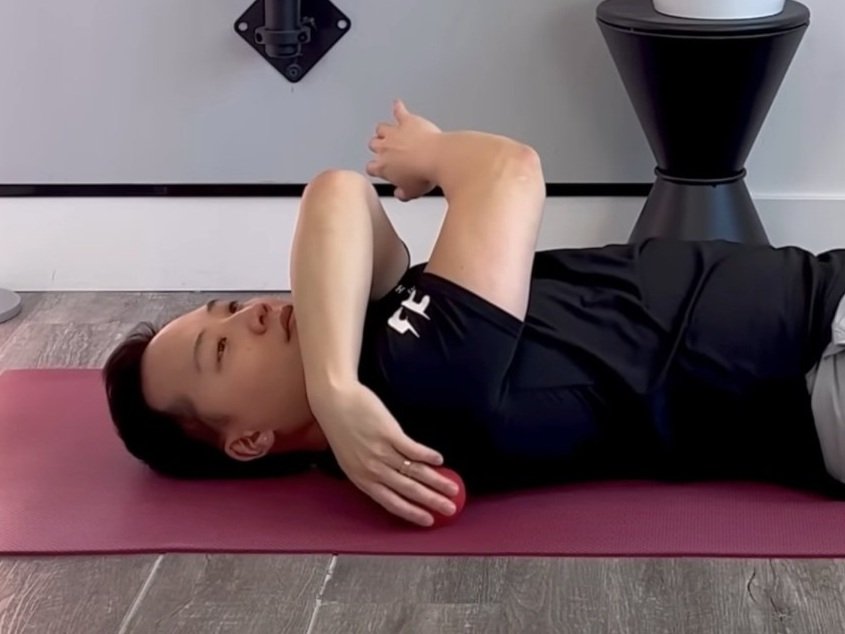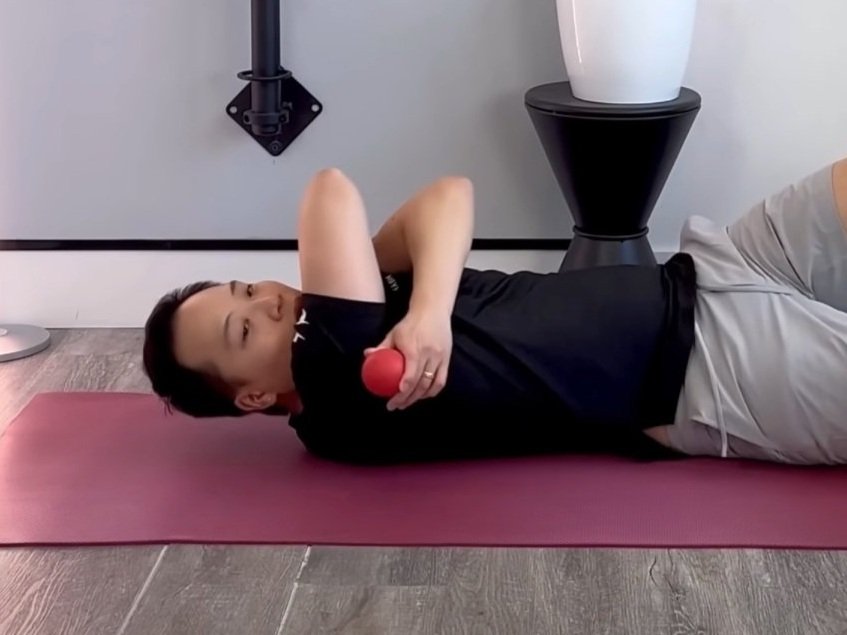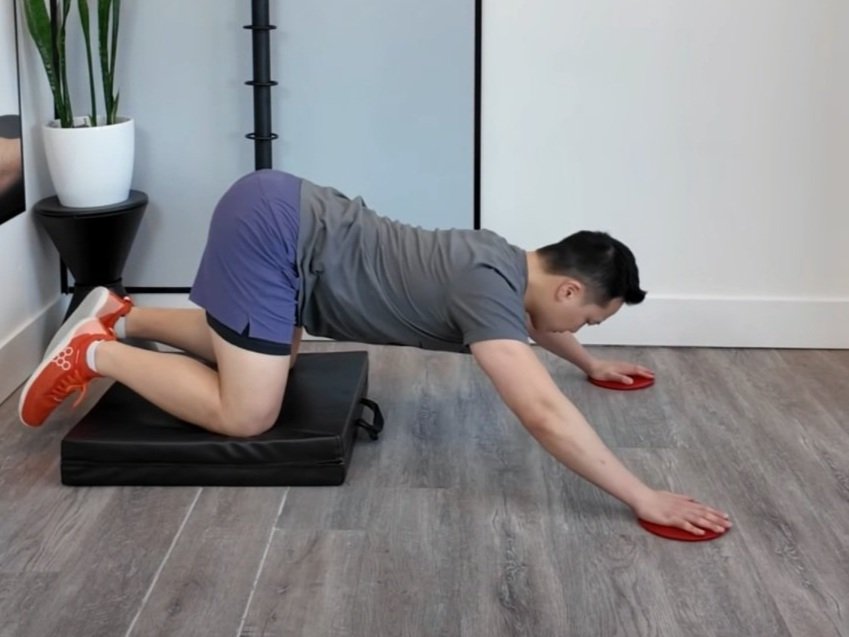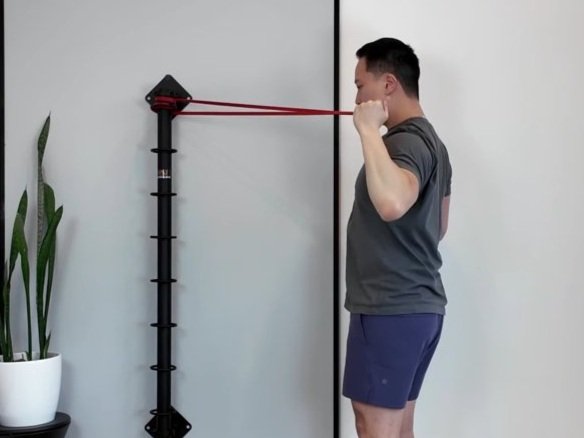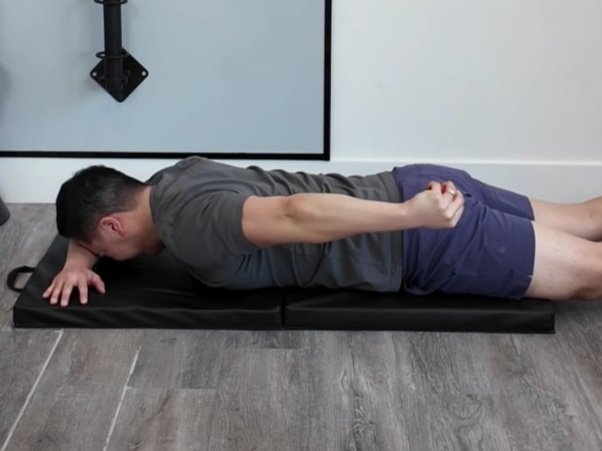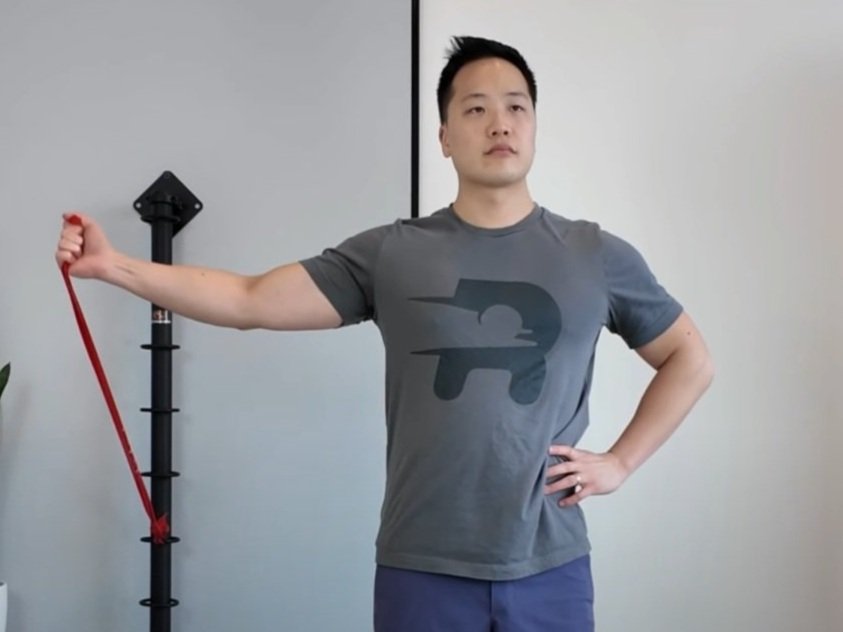Rotator Cuff Injury Treatment in Markham
Rotator Cuff Injuries
What is the Rotator Cuff and How Can It Get Injured?
What are the Rotator Cuff (RTC) Muscles?
The RTC is comprised of 4 separate muscles:
The supraspinatus originates from the top of the shoulder blade and attaches onto the superior portion of your upper arm. Its primary function is to lift the arm to the side and prevent it from sliding excessively upwards out of socket.
The infraspinatus runs from the bottom half of your shoulder blade to the outside of your upper arm and is responsible for externally rotation to the side. It also exerts a downward pull on the arm to keep it centered into the joint.
The teres minor spans the outside edge of the shoulder blade and shares the same action and insertion point as the infraspinatus
The subscapularis attaches from the front of your shoulder blade to the inside of your upper arm. It assists with internal rotation of the shoulder and prevents excess forward translation.
Although each component of the RTC is responsible for a distinct action, they work synergistically through all ranges of shoulder movement to keep the joint centered into its socket. This allows for optimal range of motion while minimizing compressive forces placed on surrounding tissues.
What Contributes to RTC Pain and Tendinopathy
Extrinsic Mechanisms: refers to any structure outside of the tendon that can exert compressive forces onto the tissue causing pain and degeneration. Certain individuals are more prone to injury simply due to the natural shape of their shoulder joint where there is decreased space available for the tendon to pass through unimpeded. Other individuals may develop increased bone formation in the same region, due to the natural process of aging, which can again decrease the available joint space. Weakness and impaired coordination of the RTC muscles may lead to the shoulder shifting out of its centered position. Finally, abnormal movements of the shoulder blade itself can also result in pathological compensations. Any of the above processes can decrease the space available in the joint, thereby increasing the likelihood of direct compression onto nearby tendons causing inflammation, pain and dysfunction.
Intrinsic Mechanisms: refers to internal processes affecting the tissue quality of the RTC tendons themselves. For example, there may be misalignment of the collagen fibers, increased scar tissue formation, calcification, and/or changes to tissue composition. All of these factors can lead to poorer tissue quality and abnormal loading of the RTC, thus increasing the likelihood of pain and degeneration. The various factors that can have a negative impact on intrinsic tendon health include genetics, drug-use, excessive smoking or alcohol consumption, metabolic abnormalities, hormonal imbalances, and excessive muscular overuse.
Symptoms of Rotator Cuff Tendinopathy
Pain felt along the front and side of the shoulder with a gradual onset over weeks-months
Feeling of a “catch” or pinch when raising the arm to the side, often between 60-120 degrees of elevation
Increase in pain when lifting arm up/sideways, carrying heavy items, and/or reaching to pick up objects
Difficulty sleeping on affected side
Pain in an internally rotated position (i.e., using a salt shaker)
Case Examples
Ultimately, both intrinsic and extrinsic factors may contribute to the mechanism of injury and onset of RTC tendinopathy. Consider the example of a middle-aged car technician who regularly engages in overhead activity. As part of the normal aging process, he may naturally have increased bone formation in the subacromial space causing a narrowing of the shoulder joint. In addition, due to the overhead nature of his occupation, he is constantly loading the muscles of his RTC with minimal rest throughout his workday. As a result, these tissues can become chronically overworked. In their state of fatigue, the RTC is also no longer able to keep the shoulder centered in the socket, thereby shifting out of place and being compressed by local bone tissue. This ultimately results in a process of pain, tendon degeneration, and onset of tendinopathy
Consider a second example of a teenage volleyball player. She has a hypermobile shoulder and has never engaged in a formal RTC strengthening regimen. As a result, she lacks dynamic stability provided by the surrounding musculature and has difficulty maintaining a congruent joint position. She is her team’s leading scorer and is therefore constantly swinging her arm overhead at high velocities. However, with every overhead spike she performs, she is unable to maintain a neutral shoulder position throughout these rapid movements due to RTC weakness. As a result, her shoulder constantly jams against nearby tendons causing inflammation and dysfunction. As the season continues, her shoulder pain may progress from a dull, achy sensation to a sharp, stabbing feeling every time she is in an overhead position
Relevant Risk Factors
Prolonged seated postures – can result in a combination of a forward head, forward flexed and rounded shoulders posture. All of which reduces the available joint space and increases the likelihood of tissue compression.
Prolonged overhead activity – can result in muscular fatigue, especially in the absence of adequate rest and recovery. This decreases the RTC’s intrinsic ability to keep the shoulder centered, thus increasing the risk for abnormal translation and compression.
Muscular imbalance – can develop due to increased sedentary postures. This may result in the chronic shortening of muscles/tissues at the front of our body and lengthening of the structures at the back. This contributes to a forward translation of our shoulders, pre-emptively narrowing the joint space, and resulting in a compromised position.
Certain sports – any activity requiring regular overhead movements (i.e., volleyball, swimming, badminton) can result in shoulder impingement, especially when fatigued.
Advancing Age – may be accompanied with a natural increase in bone tissue formation in the shoulder joint, thus reducing the amount of available space for the tendons to travel through.
Scapular Dyskinesia – the shoulder blade must work synergistically with the arm when moving overhead. If the shoulder blade is in an abnormal position of downward rotation, internal rotation, and anterior tilt, this can force the upper arm to compensate through a pathological range of motion, increasing injury risk.
Joint hypermobility – if the arm has access to excess range of motion, in the absence of muscular stabilization, it becomes much easier to shift out of place, thus impinging local structures.
RTC Weakness – the surrounding shoulder musculature is no longer able to provide the dynamic stability required to maintain a congruent shoulder position. This increases the likelihood of intrinsic degeneration and pathological movement.
Treatment Options for Recovery
Treating RTC tendinopathies often begin with identifying relevant postural and occupational factors that contribute to dysfunction. Programmed work/study breaks are very important to aid in recovery and prevent fatigue. Active range of motion exercises and soft tissue release techniques are crucial to restore normal posture and tissue length. Enhancing mobility at both the shoulder, shoulder blade, and spine ultimately optimizes joint positioning and decreases pain.
A series of progressive strengthening exercises should be provided to target the RTC and shoulder blade muscles. This promotes increased blood flow to optimize recovery, increases muscle resilience to stress, and provides the necessary stability to maintain a neutral shoulder position in both static and dynamic actions.
Other complementary treatment strategies that may be valuable include manual therapy, joint mobilizations, movement retraining, and acupuncture. These conjunct approaches can help by minimizing pain, reducing muscular tightness, restoring joint space, and promoting better body mechanics. For additional details that are specific to you visit us for rotator cuff injury treatment in Markham.
How Physiotherapy, Chiropractic, or Osteopathy Can Help
Having a licensed healthcare provider assess your shoulders can greatly accelerate your recovery and take the guesswork out of the process. With an in-depth postural and movement assessment, your clinician can accurately identify the source of your pain, relevant mobility limitations, and any compensatory movement patterns that contribute to the dysfunction. They will help create an individualized exercise program to enhance your shoulder resilience and be there to guide you through every movement safely and effectively. A combination of manual therapy and mobilizations will be provided to restore motion to your muscles and joints. In addition, your clinician will also provide the necessary education to help monitor your recovery and prevent reinjury from occurring.
At Rehab Hero you can receive rotator cuff injury treatment services in Markham. Contact us if you are suffering from knee pain or any other musculoskeletal issues. You can also click here to book in directly online with an experienced Rehab Hero chiropractor or physiotherapist.
Need a rotator cuff warm up? Check out our 10 minute shoulder warm up video:
Here is Dr. David Song’s top 5 exercises for ‘bulletproofing’ your rotator cuff:

